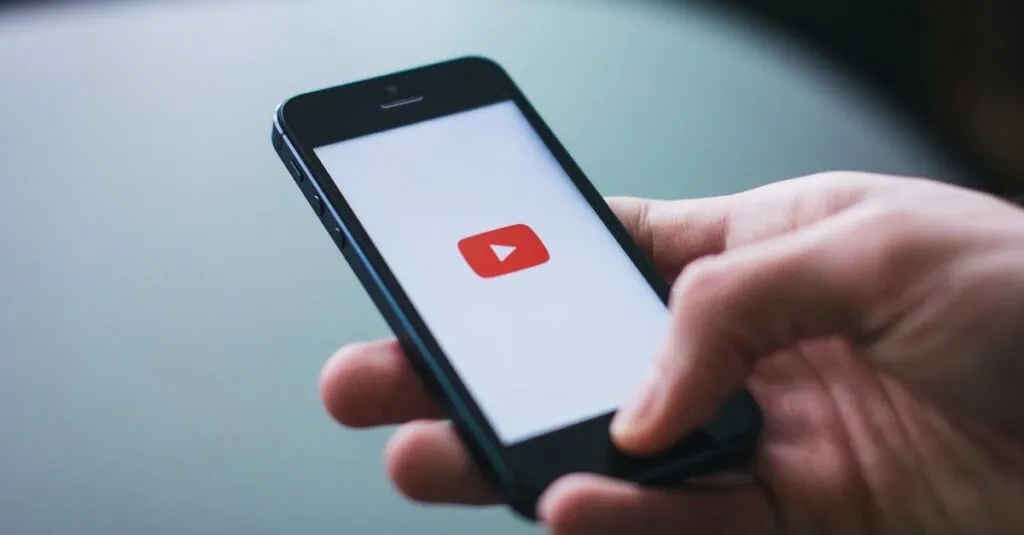Table of Contents
ToggleEver tried to access a website on your iPhone only to be met with a blank screen or an error message that feels like a personal attack? You’re not alone. Many iPhone users find themselves scratching their heads, wondering why their favorite sites are suddenly off-limits. It’s like being locked out of a party you didn’t even know you were invited to!
Common Reasons for Website Accessibility Issues
Many iPhone users face barriers when trying to access certain websites. Identifying the causes can lead to quick resolutions.
Network Connectivity Problems
Network connectivity problems frequently hinder website access. Insufficient Wi-Fi or cellular signal often leads to timeouts or failed connections. Checking the network settings can reveal if the iPhone is properly connected. If a user’s device disconnects from Wi-Fi, switching to cellular data may help. Turning Airplane mode on and off can also refresh the connection. Signal strength can vary based on location, so moving closer to the router or in an open area can improve access.
DNS Issues
DNS issues often prevent websites from loading. Users rely on DNS servers to translate web addresses into IP addresses. If the default DNS servers encounter issues, users can’t reach their desired websites. Changing DNS settings on the iPhone can resolve this. Switching to Google’s DNS (8.8.8.8 and 8.8.4.4) or Cloudflare’s DNS (1.1.1.1) may improve access. Testing the new settings ensures connectivity is restored effectively. Clearing the browser’s cache and cookies can also enhance performance after DNS changes.
Device-Specific Settings
Device settings can significantly impact website accessibility on an iPhone. Adjusting these settings may resolve common issues.
Free Up Storage Space
Insufficient storage space can hinder website loading. Check available storage by navigating to Settings, then General, and selecting iPhone Storage. Remove unnecessary apps, photos, or videos to free up space. A device with limited storage might struggle to load websites efficiently. Users often find that deleting large files improves performance and eliminates loading errors.
Check Safari Settings
Safari’s settings could also block access to certain websites. Open Settings, scroll to Safari, and review the configurations. Ensure that content blockers aren’t preventing website access. Additionally, disabling “Private Browsing” may help resolve access issues. Users may also want to clear Safari’s history and website data under the same settings menu. A refreshed cache can significantly enhance browsing experiences.
Software Updates and Compatibility
Software updates play a crucial role in ensuring access to websites on an iPhone. Regular iOS updates often include vital security patches, performance improvements, and bug fixes. Maintaining the latest version minimizes unexpected issues with website loading. Users can check for updates by navigating to Settings, then tapping on General followed by Software Update.
Importance of iOS Updates
iOS updates enhance compatibility with the latest web technologies. Outdated software may fail to support new website features, leading to loading errors. For example, websites utilizing modern security protocols might not work on older iOS versions. Updating to the latest iOS version often resolves these compatibility issues, allowing users to access their favorite sites seamlessly.
Compatibility with Websites
Compatibility between an iPhone and specific websites is influenced by several factors. Some websites use advanced technologies that require up-to-date browsers to function correctly. Websites may also rely on specific features available only in the latest browser versions. Ensuring that Safari or any other browser installed is updated can enhance overall browsing performance. Website developers may design their sites for optimal performance on recent operating systems, making it necessary for users to keep their iPhones updated to improve accessibility.
Troubleshooting Steps to Resolve Issues
Addressing website accessibility issues on an iPhone can involve several practical steps. Users can try the following methods to recover access.
Restarting Your Device
Restarting the device often resolves temporary glitches. To do this, press and hold the power button until the “slide to power off” option appears. After swiping to turn off the iPhone, wait for 30 seconds before powering it back on. This process refreshes the device’s operating system and can fix connectivity problems. It’s a quick method that frequently enhances the overall performance.
Resetting Network Settings
Resetting network settings can clear misconfigurations affecting website access. Users can navigate to the Settings app, select “General,” and then click on “Transfer or Reset iPhone.” After that, they should choose “Reset” and tap “Reset Network Settings.” This action erases saved Wi-Fi passwords and VPN settings, so noting those down beforehand is crucial. Restarting the device after this step often establishes a more stable connection, allowing websites to load properly.
Experiencing difficulties accessing websites on an iPhone can be frustrating. However with the right troubleshooting steps users can often resolve these issues quickly. Checking network settings and ensuring sufficient storage are crucial first steps. Additionally adjusting DNS settings and clearing browser data can significantly improve accessibility.
Staying updated with the latest iOS version is essential for optimal performance. Regular software updates not only enhance compatibility but also provide necessary security fixes. By following these guidelines users can regain access to their favorite websites and enjoy a smoother browsing experience on their iPhones.







